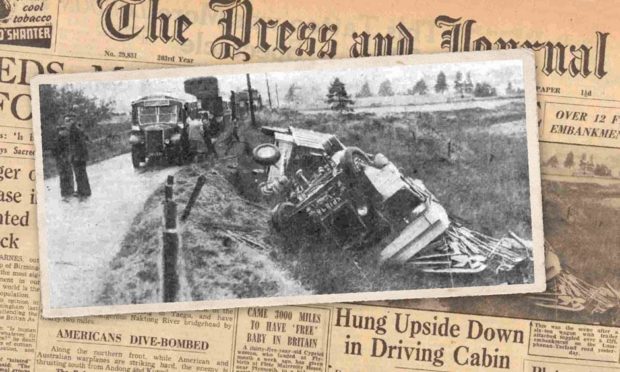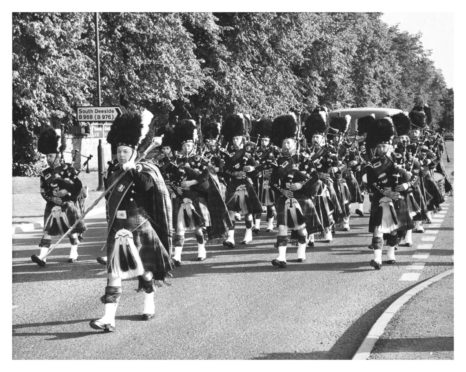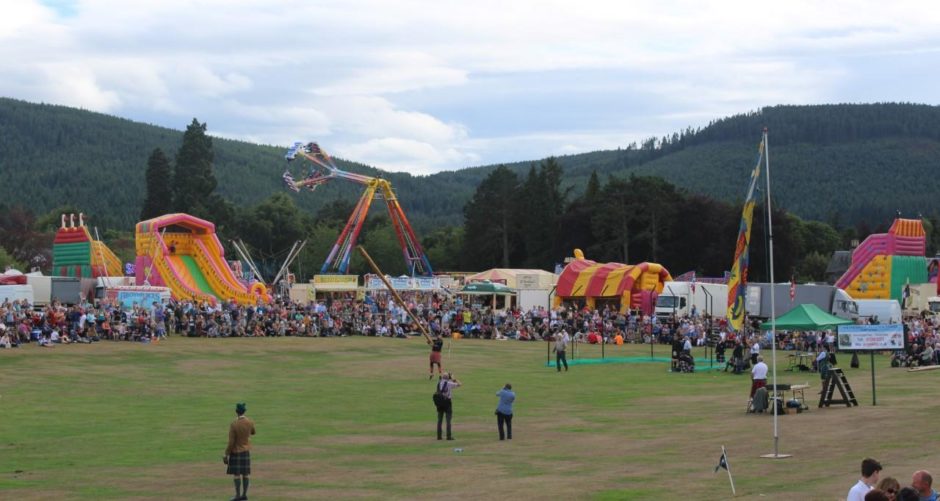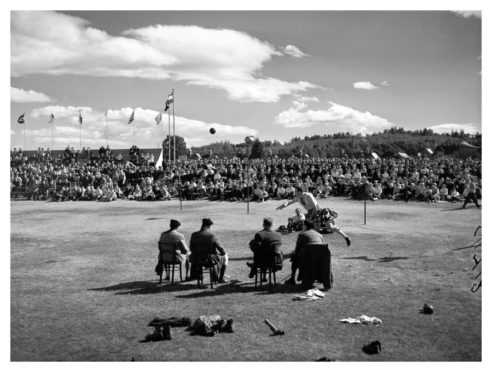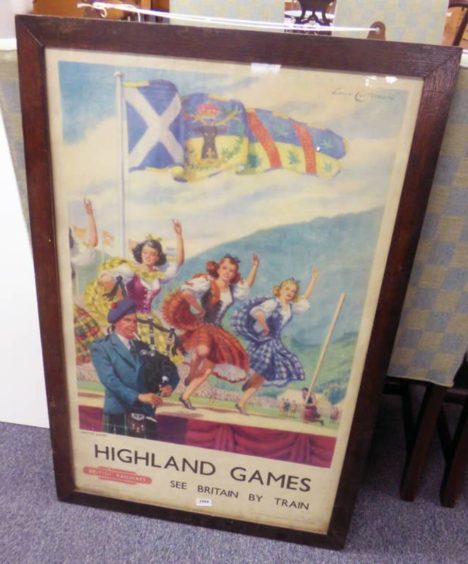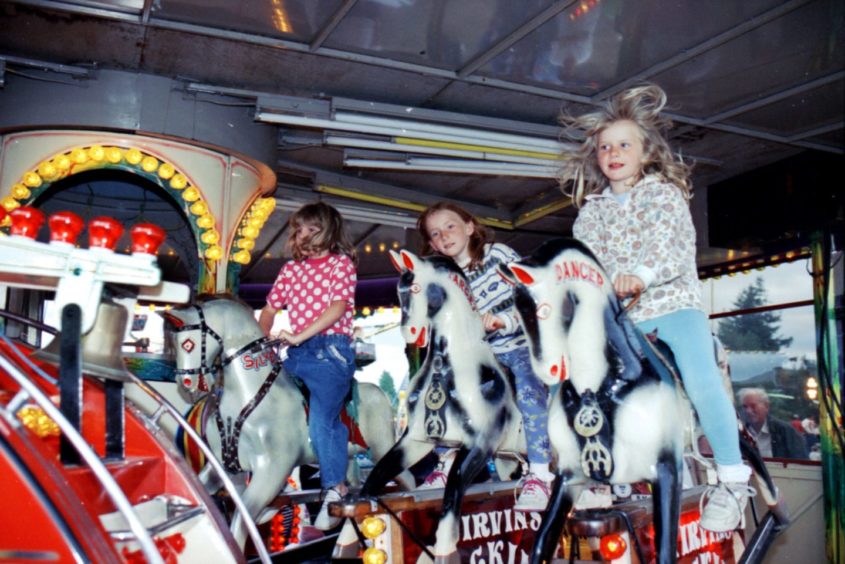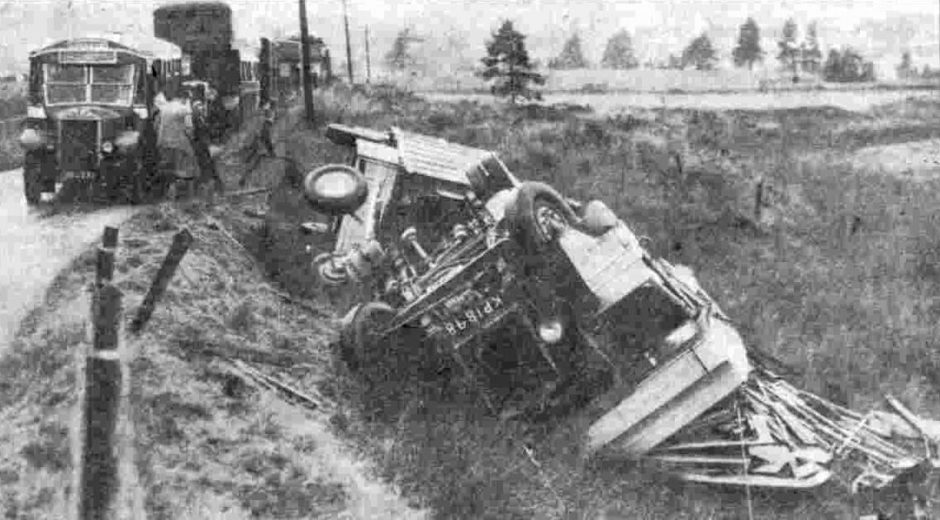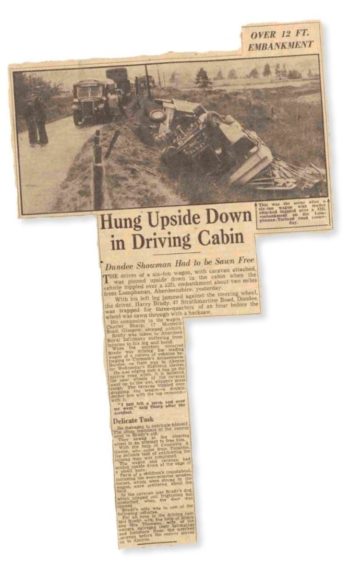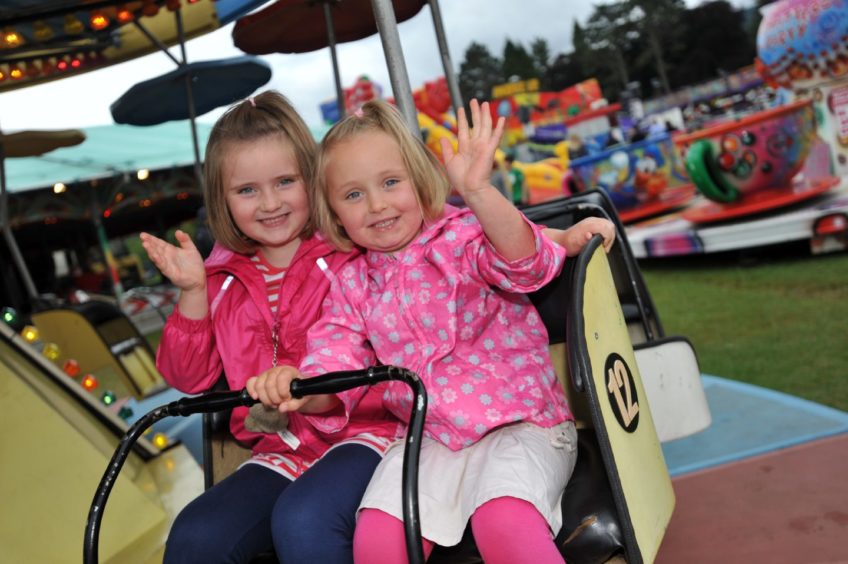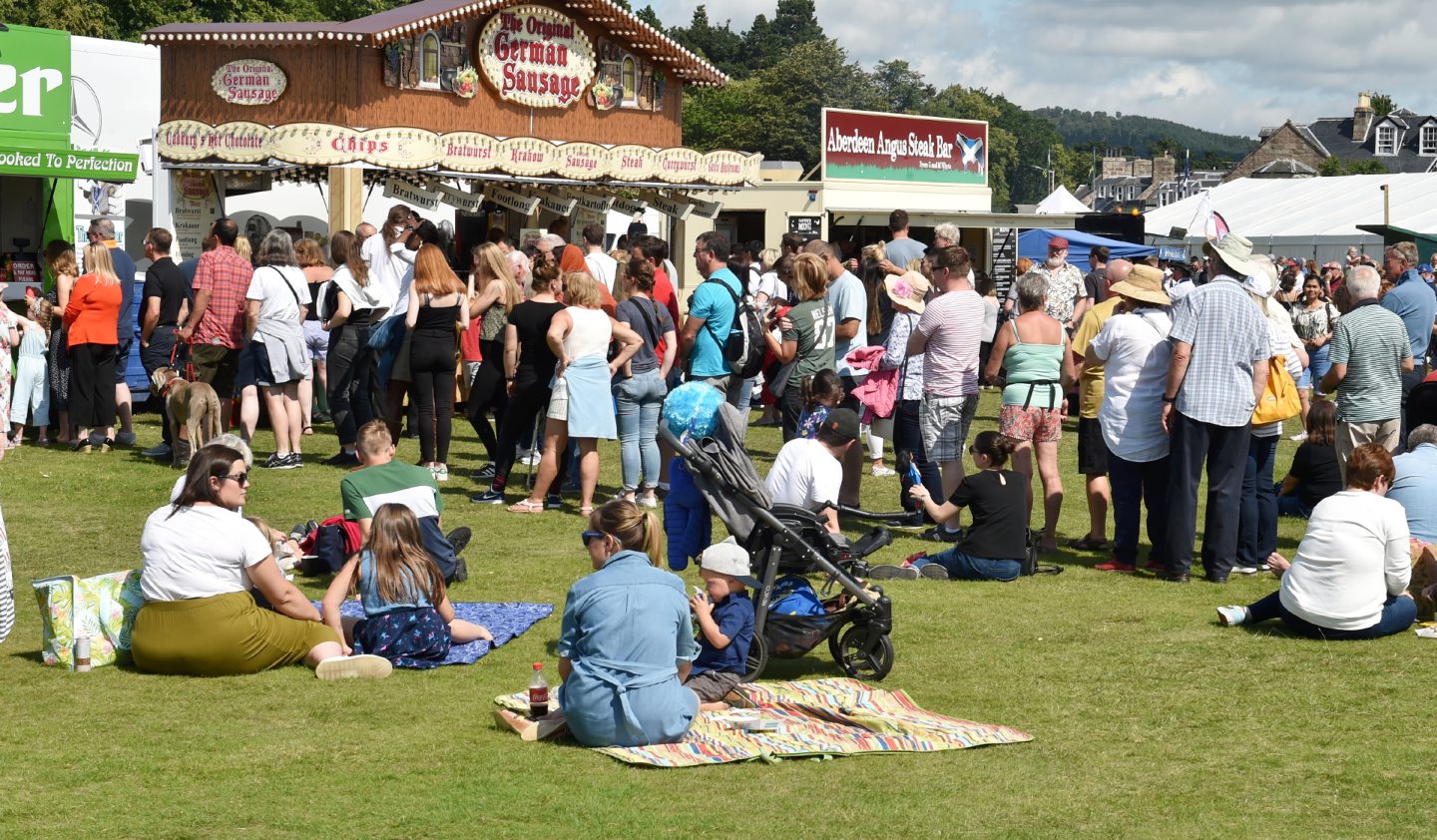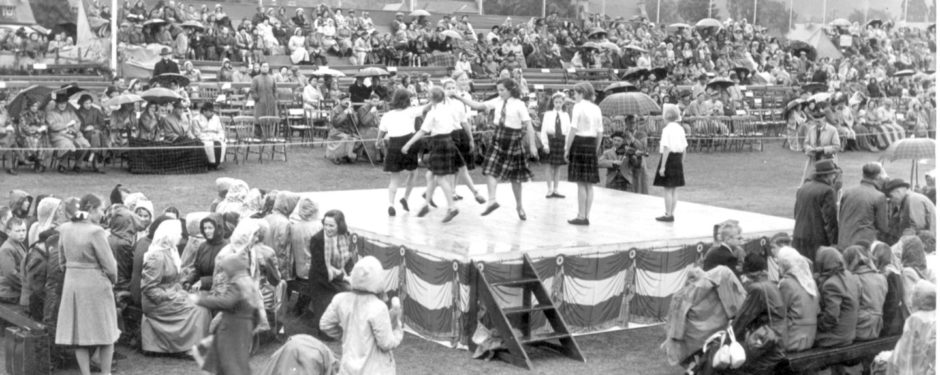Visitors have grown accustomed to enjoying all the fun of the fair whenever they travel to the Aboyne Highland Games every August.
Ever since its inception in Victorian times – in 1867 – this event has been a highlight of the Deeside summer calendar.
A heady mix of piping, Highland dancing, light and heavy athletics, tug o’ war and fiddle music regularly draws around 10,000 visitors, who have invested millions of pounds in the local economy down the decades.
However, there have also been plenty of fairground attractions, providing a rich source of entertainment, because these annual Games also feature around 80 trade stands and a large funfair, which has consistently proved popular with visitors of all ages.
The latter has a history stretching back more than 100 years, with a raucous razzamatazz all its own.
Given the allure of the roller-coaster, waltzers and other mechanical marvels on the fair circuit, it’s hardly surprising that Aboyne’s officials have worked diligently to make sure they recruit high-quality companies.
After all, these amenities have been enjoyed by many local dignitaries and even an occasional member of the Royal Family whenever they choose to visit the north-east.
But it hasn’t always been plain sailing or easy motoring for those who lay on the key pieces of the infrastructure.
Nor have the discussions about who should supply the funfair and ensure it is properly maintained progressed smoothly.
The committee meeting minutes for the Games from 1910 onwards detail that vendors’ stalls, sideshows and shooting galleries were a prominent feature of the event.
And similar records from 1924 record that Henry Shapiro, who operated chair-o-planes and merry-go-rounds at Aberdeen Beach, wrote to the committee offering to take charge of the whole amusement stance at the games for the princely sum of £50.
However, that offer was rejected, and the canny Aboyne organisers continued to let all of the stances for the amusements and sideshows directly to stallholders.
One photograph of a large crowd watching the proceedings at the games which was printed in The Press & Journal on Thursday, September 3 1931 appears to show a fairground carousel in the background.
Fortune tellers aplenty
The accompanying report on the festivities mentions sideshows being present, while the report added: “One of the astonishing features was the number of Roman palmists. There were almost a score of them”.
All, presumably, forecasting fortunes even as they raked in fortunes of their own.
The crowds flocked through the gates right up until the brink of the Second World war, boosted by special train services which ran regularly between Aberdeen and Deeside.
But officials were concerned that the entertainment from the funfair might impact on the programme of events being staged simultaneously on the games field.
An advert for the 1939 festival stated: “Loudspeakers and mechanical music are forbidden in the fairground until piping competitions are over”.
As it transpired, no such regulations were required. Aboyne could not escape the grim events which were taking precedence over everything else and the event was cancelled just a few days before it was scheduled to take place as war engulfed the globe.
In 1950, a notable visitor to the Games had enjoyed his time in Aboyne, with a headline in the P&J carrying the headline: “Funfair Attracts Young Duke”.
The report continued: “When the young Duke of Kent arrived, he mixed with the crowd, and some time elapsed before his presence was noted. He spent his time between the funfair and the sports.”
Narrow escape after wagon topples
He couldn’t have known that he was lucky to be able to enjoy the funfair at all. Just a few days before they were held, one of the wagons which was transporting the funfair to Aboyne was involved in a notable accident.
The heavy vehicle toppled 12 feet down an embankment and was transformed into a crumpled mass of metal.
The P&J reported: “With his left leg jammed against the steering wheel, the driver [Harry Brady from Dundee] was trapped for three-quarters of an hour before the wheel was sawn through with a hacksaw”.
“When the accident occurred, Brady was driving the leading wagon of a convoy of vehicles, belonging to Thomson’s Amusements in Dundee, who were on their way to Aboyne for Wednesday’s Highland Games.
“He was edging past a bus on the narrow road when, it is believed, the near wheels of the caravan went on to the wet, slippery grass verge.
“The caravan toppled over, dragging the wagon – a double-decker bus with the top removed – with it.
“Brady was taken to Aberdeen Royal Infirmary, suffering from injuries to his leg and hand. His companion in the wagon, Charles Sharp [of Glasgow] escaped unhurt.
” He said later: ‘I just felt a lurch and over we went.”
An expensive repair job
It could have been much worse, but the accident prompted an extensive repair job.
Parts of a children’s roundabout, including the ever-popular wooden horses, which had been stored in the back of the wagon, were scattered about a nearby field.
For hours thereafter, despite the driving rain, Mrs Brady, with the help of Sharp and Mrs Thomson, the wife of the [company] owner, salvaged their belongings and furniture from the wrecked caravan before the convoy moved on to Aboyne.”
Thankfully, these redoubtable characters responded quickly to their problems. The show, as usual, went on and Mr Brady recovered from his ordeal.
The Games have also been attended by Her Majesty the Queen.
There has never been any shortage of favourable reviews for the Aboyne Games, although the Covid pandemic has forced their cancellation in 2020 and 2021.
As long ago as 1954, the Broughty Ferry Guide & Advertiser described the fairground as “an interesting attraction with its wide variety of side shows”.
And Alistair Grant, the chairman of the event, has no doubt it has been one of the myriad disparate ingredients which have helped put the community on the global map.
He said: “The funfair has been a longstanding element of the games day at Aboyne. It remains as popular today with visitors of all ages, as it did decades ago.
“Everyone has fond memories of the funfair, whether that is having a shot on the carousel or waltzers, or winning a prize in one of the sideshows.
“Some of the showmen have been coming to Aboyne Highland Games for decades and it is great to welcome them back each year.”
Mr Grant added: Although the rides, sideshows and technologies have changed since the funfair was first held as part of Aboyne Highland Games, one thing hasn’t – all the fun that it brings.
“We look forward to the funfair being back in action alongside the games in 2022.”
All being well, the event has been scheduled for August 6.
When did the Games all start?
The first meeting of the inhabitants of Aboyne and the surrounding area was held on Saturday, July 27 1867 in the Huntly Arms Hotel in the Deeside community, “where a unanimous wish was expressed to get up an Athletic Games on the Market Stance”.
A committee was formed to organise proceedings, which included world-renowned athlete Donald Dinnie – the man whose frame appeared on the original Irn Bru bottles – and his younger brother Lubin, who were born near Aboyne.
Five weeks later, on Saturday August 31, a crowd of “several thousand spectators, of all classes, and all out for a holiday, surrounded the large enclosure on the muir” to watch the first Aboyne Highland Games.
The proceedings were held under the patronage of a number of local landowners, including the 11th Marquis of Huntly, Charles Gordon, who became chieftain of the games and one of the great trailblazers of the initiative.
It was a role he held for 70 years until his death in 1937, at which time his son Douglas Charles Gordon, the 12th Marquis of Huntly took over the role.
Further information can be found at https://www.aboynegames.com/
